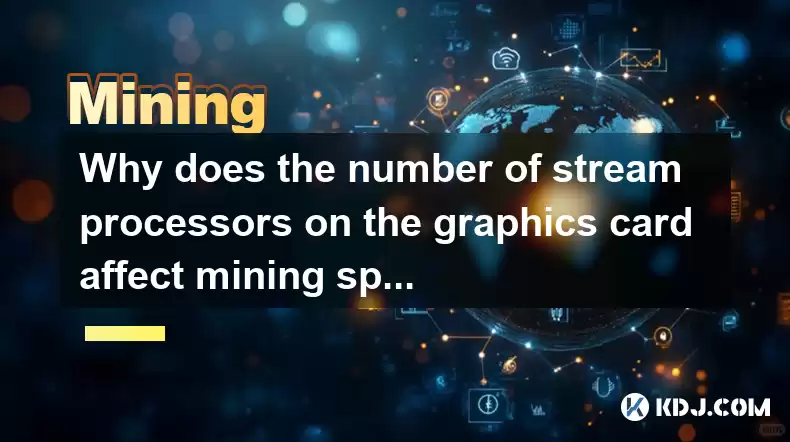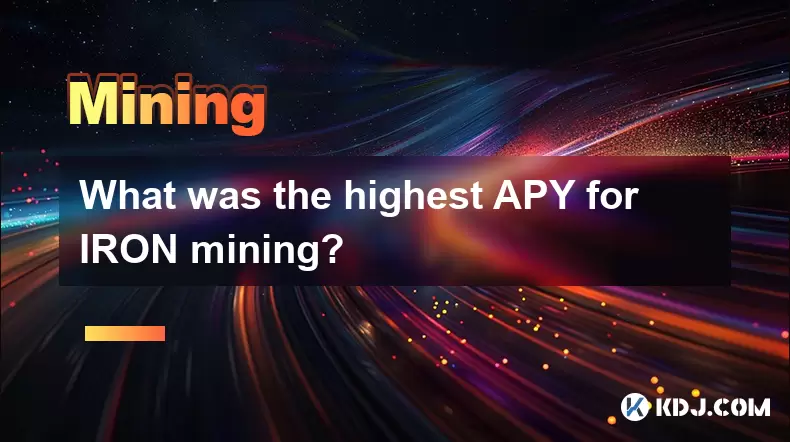-
 Bitcoin
Bitcoin $115000
0.12% -
 Ethereum
Ethereum $3701
4.50% -
 XRP
XRP $3.081
2.99% -
 Tether USDt
Tether USDt $0.0000
-0.01% -
 BNB
BNB $767.9
1.45% -
 Solana
Solana $169.5
3.13% -
 USDC
USDC $0.9999
0.01% -
 Dogecoin
Dogecoin $0.2106
4.30% -
 TRON
TRON $0.3334
1.62% -
 Cardano
Cardano $0.7564
2.54% -
 Stellar
Stellar $0.4165
0.76% -
 Hyperliquid
Hyperliquid $38.75
0.25% -
 Sui
Sui $3.593
3.00% -
 Chainlink
Chainlink $17.08
3.59% -
 Bitcoin Cash
Bitcoin Cash $573.6
4.35% -
 Hedera
Hedera $0.2508
-0.84% -
 Avalanche
Avalanche $23.07
6.46% -
 Ethena USDe
Ethena USDe $1.001
-0.02% -
 Litecoin
Litecoin $120.8
8.17% -
 UNUS SED LEO
UNUS SED LEO $8.943
-0.32% -
 Toncoin
Toncoin $3.400
-5.60% -
 Shiba Inu
Shiba Inu $0.00001255
1.54% -
 Uniswap
Uniswap $9.908
6.32% -
 Polkadot
Polkadot $3.718
2.10% -
 Monero
Monero $303.0
-0.74% -
 Dai
Dai $0.9999
-0.02% -
 Bitget Token
Bitget Token $4.392
0.91% -
 Cronos
Cronos $0.1403
6.31% -
 Pepe
Pepe $0.00001076
1.13% -
 Aave
Aave $267.2
1.80%
Why does the number of stream processors on the graphics card affect mining speed?
Stream processors boost mining speed by enabling parallel computations; more processors mean higher hash rates, crucial for solving crypto puzzles efficiently.
Apr 03, 2025 at 10:01 am

The number of stream processors on a graphics card directly impacts mining speed due to their role in executing parallel computations essential for cryptocurrency mining. Stream processors, also known as CUDA cores in NVIDIA GPUs or Stream Processors in AMD GPUs, are the fundamental units that perform the complex mathematical operations required to solve cryptographic puzzles in mining. The more stream processors a GPU has, the more calculations it can handle simultaneously, leading to higher hash rates and, consequently, faster mining speeds.
In cryptocurrency mining, the primary task is to solve hash functions, which are essentially complex mathematical problems. The speed at which these problems are solved is measured in hash rates, typically expressed in hashes per second (H/s). A higher number of stream processors allows for more parallel processing, which directly translates into a higher hash rate. For instance, a GPU with 3,000 stream processors can process more data at once compared to a GPU with only 1,500 stream processors, resulting in a higher mining speed.
The Role of Stream Processors in Mining Algorithms
Different cryptocurrencies use various mining algorithms, each with its own computational demands. For example, Ethereum uses the Ethash algorithm, which is memory-intensive, while Bitcoin uses SHA-256, which is more dependent on processing power. Regardless of the algorithm, stream processors are crucial because they handle the core computational tasks. The efficiency of these processors in executing the specific algorithm's operations directly influences the mining performance.
When mining Ethereum, for instance, a GPU with a higher number of stream processors can execute the Ethash algorithm more efficiently. This efficiency comes from the ability to process more data in parallel, which is critical for memory-hard algorithms like Ethash. Similarly, when mining Bitcoin, a GPU with more stream processors can perform the SHA-256 operations faster, leading to a higher hash rate and better mining performance.
Impact of Stream Processor Architecture
The architecture of the stream processors also plays a significant role in mining speed. Modern GPUs have evolved to include more efficient architectures that can handle more complex tasks. For instance, NVIDIA's Ampere architecture and AMD's RDNA 2 architecture offer improved performance per stream processor compared to their predecessors. This means that even if two GPUs have the same number of stream processors, the one with a more advanced architecture will generally perform better in mining.
Additionally, the clock speed of the stream processors affects mining speed. Higher clock speeds allow for faster execution of instructions, which can lead to higher hash rates. However, the relationship between clock speed and mining performance is not always linear, as other factors like power consumption and thermal limits also come into play. GPUs with more stream processors often have higher power requirements, which can limit the maximum clock speed achievable during mining.
Other Factors Influencing Mining Speed
While the number of stream processors is a critical factor, other components of the GPU also influence mining speed. The amount of VRAM (Video Random Access Memory) is particularly important for memory-intensive algorithms like Ethash. A GPU with more VRAM can store more data, which is essential for efficiently processing the large datasets required by these algorithms. Therefore, a GPU with a high number of stream processors but insufficient VRAM may not perform as well as expected in certain mining scenarios.
The memory bandwidth of the GPU is another crucial factor. Higher memory bandwidth allows for faster data transfer between the GPU's memory and its stream processors, which can improve mining performance. GPUs with higher memory bandwidth can handle the data-intensive nature of mining algorithms more effectively, leading to better hash rates.
Optimizing GPU for Mining
To maximize mining speed, it's important to optimize the GPU settings. Overclocking the GPU can increase the clock speed of the stream processors, potentially leading to higher hash rates. However, overclocking also increases power consumption and heat generation, which can reduce the longevity of the GPU if not managed properly.
- Use mining-specific software to monitor and adjust the GPU's performance.
- Adjust the core clock and memory clock to find the optimal balance between performance and stability.
- Ensure proper cooling to prevent thermal throttling, which can reduce mining speed.
- Monitor power consumption to avoid exceeding the GPU's power limits, which can lead to instability.
Comparing GPUs for Mining
When choosing a GPU for mining, it's essential to compare the number of stream processors, architecture, VRAM, and memory bandwidth. For example, the NVIDIA GeForce RTX 3080 has 8,704 CUDA cores and 10 GB of GDDR6X memory, making it a powerful option for mining. In contrast, the AMD Radeon RX 5700 XT has 2,560 stream processors and 8 GB of GDDR6 memory, which is still effective but less powerful than the RTX 3080.
The choice of GPU depends on the specific cryptocurrency being mined and the mining algorithm used. For memory-intensive algorithms like Ethash, GPUs with higher VRAM and memory bandwidth are preferable. For algorithms that rely more on processing power, like SHA-256, GPUs with a higher number of stream processors and a more efficient architecture are more suitable.
The Future of GPU Mining
As cryptocurrency mining continues to evolve, the role of GPUs and their stream processors will remain crucial. Newer GPU architectures are being developed with mining in mind, offering even higher numbers of stream processors and more efficient designs. For instance, the upcoming NVIDIA RTX 40 series and AMD's next-generation GPUs are expected to further enhance mining performance.
However, the increasing difficulty of mining algorithms and the rise of ASIC (Application-Specific Integrated Circuit) miners pose challenges for GPU mining. ASICs are designed specifically for mining and can outperform GPUs in terms of hash rate and energy efficiency. Despite this, GPUs remain popular due to their versatility and the ability to mine a wider range of cryptocurrencies.
Common Questions Related to Stream Processors and Mining Speed
Q: What are stream processors, and why are they important for mining?
A: Stream processors are the core computational units in a GPU that perform parallel processing. They are crucial for mining because they handle the complex mathematical operations required to solve cryptographic puzzles. The more stream processors a GPU has, the more calculations it can perform simultaneously, leading to higher hash rates and faster mining speeds.
Q: How does the number of stream processors affect the hash rate?
A: The number of stream processors directly impacts the hash rate because it determines how many calculations can be performed in parallel. A higher number of stream processors allows for more data to be processed at once, resulting in a higher hash rate and faster mining speed.
Q: Can increasing the clock speed of stream processors improve mining performance?
A: Yes, increasing the clock speed of stream processors can improve mining performance by allowing for faster execution of instructions. However, this also increases power consumption and heat generation, which must be managed to prevent instability and thermal throttling.
Q: Are GPUs with more stream processors always better for mining?
A: Not always. While more stream processors generally lead to higher hash rates, other factors like VRAM, memory bandwidth, and the specific mining algorithm also play significant roles. For memory-intensive algorithms, GPUs with higher VRAM and memory bandwidth may be more effective.
Q: How can I optimize my GPU for mining?
A: To optimize your GPU for mining, you can use mining-specific software to monitor and adjust performance settings. Overclocking the core clock and memory clock can increase hash rates, but ensure proper cooling and monitor power consumption to maintain stability and longevity.
Q: What is the future of GPU mining with the rise of ASIC miners?
A: The future of GPU mining remains relevant despite the rise of ASIC miners. GPUs offer versatility and can mine a wider range of cryptocurrencies. Newer GPU architectures are being developed with mining in mind, offering higher numbers of stream processors and more efficient designs to compete with ASICs.
Disclaimer:info@kdj.com
The information provided is not trading advice. kdj.com does not assume any responsibility for any investments made based on the information provided in this article. Cryptocurrencies are highly volatile and it is highly recommended that you invest with caution after thorough research!
If you believe that the content used on this website infringes your copyright, please contact us immediately (info@kdj.com) and we will delete it promptly.
- Velo Universe, DEX, and DeFi Security: Navigating the Future of Decentralized Trading
- 2025-08-05 09:25:13
- Bitget Wallet Revolutionizes Solana with Gas-Free Transactions: A New Era for DeFi
- 2025-08-05 09:25:13
- Ozak AI, Crypto Boom, and ROI Potential: Is This the Next Big Thing?
- 2025-08-05 09:25:24
- Solana's ETF Hopes & the All-Time High Chase: Is SOL Set to Soar?
- 2025-08-05 09:25:24
- Coinbase's Brian Armstrong and the Art of Focused Work: A Deep Dive
- 2025-08-05 09:25:30
- Uniswap Price Prediction: Bullish Reversal on the Horizon?
- 2025-08-05 09:25:30
Related knowledge

What was the highest APY for IRON mining?
Jul 23,2025 at 05:14am
Understanding IRON Token and Its Mining MechanismThe IRON token is a stablecoin that operates within the Iron Finance ecosystem, primarily on blockcha...

What is impermanent loss in IRON pools?
Jul 23,2025 at 09:00am
Understanding Impermanent Loss in the Context of IRON PoolsImpermanent loss is a phenomenon that affects liquidity providers in decentralized finance ...

How to claim rewards from IRON mining?
Jul 23,2025 at 02:21pm
Understanding IRON Mining and Reward MechanismsIRON Finance operated as a decentralized finance (DeFi) protocol on the Polygon and Binance Smart Chain...

How to claim rewards from IRON mining?
Jul 29,2025 at 05:07am
Understanding IRON Mining and Reward MechanismIRON is a dual-token system designed to stabilize the value of a synthetic asset through a combination o...

IRON mining tutorial for beginners
Jul 27,2025 at 12:01am
What Is IRON and How Does It Work in the Cryptocurrency Ecosystem?IRON is a cryptocurrency token that operates on the Binance Smart Chain (BSC) and is...

How to calculate APY for IRON mining?
Jul 28,2025 at 09:49am
Understanding APY in the Context of IRON Token MiningWhen engaging in IRON token mining within decentralized finance (DeFi) platforms, Annual Percenta...

What was the highest APY for IRON mining?
Jul 23,2025 at 05:14am
Understanding IRON Token and Its Mining MechanismThe IRON token is a stablecoin that operates within the Iron Finance ecosystem, primarily on blockcha...

What is impermanent loss in IRON pools?
Jul 23,2025 at 09:00am
Understanding Impermanent Loss in the Context of IRON PoolsImpermanent loss is a phenomenon that affects liquidity providers in decentralized finance ...

How to claim rewards from IRON mining?
Jul 23,2025 at 02:21pm
Understanding IRON Mining and Reward MechanismsIRON Finance operated as a decentralized finance (DeFi) protocol on the Polygon and Binance Smart Chain...

How to claim rewards from IRON mining?
Jul 29,2025 at 05:07am
Understanding IRON Mining and Reward MechanismIRON is a dual-token system designed to stabilize the value of a synthetic asset through a combination o...

IRON mining tutorial for beginners
Jul 27,2025 at 12:01am
What Is IRON and How Does It Work in the Cryptocurrency Ecosystem?IRON is a cryptocurrency token that operates on the Binance Smart Chain (BSC) and is...

How to calculate APY for IRON mining?
Jul 28,2025 at 09:49am
Understanding APY in the Context of IRON Token MiningWhen engaging in IRON token mining within decentralized finance (DeFi) platforms, Annual Percenta...
See all articles

























































































